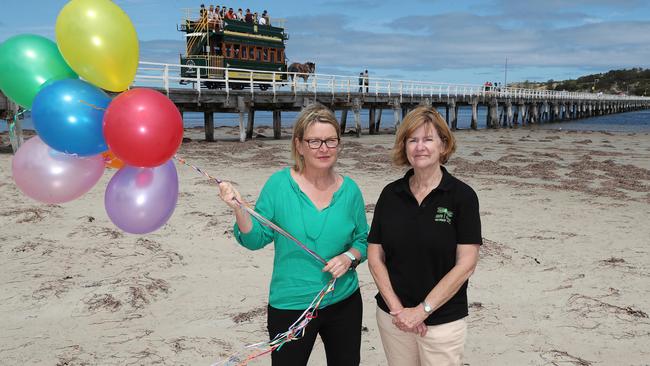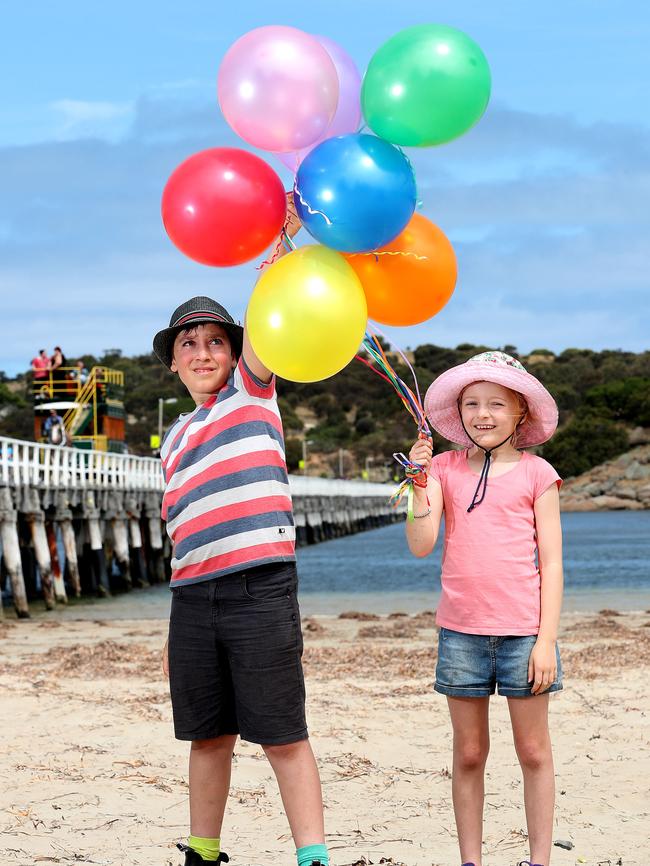Victor Harbor Council investigates a ban on helium balloons to protect marine life — and wants South Coast councils to follow suit
A SEASIDE council is considering a ban on helium balloons in outdoor areas to protect South Australia’s marine life from being killed by latex. Do you agree? Vote and have your say.

SA News
Don't miss out on the headlines from SA News. Followed categories will be added to My News.
- Two baby dolphins dead — was Port River pollution to blame?
- SA councils dealing with one code of conduct complaint a week
A SEASIDE council is investigating a ban on helium balloons in outdoor areas, in a bid to protect native and marine wildlife from the deadly effects of latex remnants.
Victor Harbor Council would become the first council in SA to ban the use of gas-filled balloons on land under its control, should it vote to introduce the by-law.
Councillor Moira Jenkins proposed the ban, saying the council should show “leadership” in the wake of complaints about pollution at the town’s Christmas pageant last month.
“During the pageant there were balloons on floats and some got loose, flying into the air, and a number of residents raised concerns with me about that,” Ms Jenkins said.
“We’re a coastal community and there is a very high risk of those balloons going into the ocean and ending up being eaten by penguins, fish and dolphins.”
Balloons, plastic bags and bottles were the three most harmful pollutants that threaten marine wildlife, according to a 2016 study by the CSIRO.
Ms Jenkins said gas-filled balloons were harder to control and she had made a “compromise” with the council not to ask it to ban all types of balloons.
Victor Harbor’s South Coast Environment Centre supported the move and believed bubbles, streamers, ribbons and flags should be used as an alternative.

“Given there are alternatives people can use to celebrate or commemorate with rather than balloons, why celebrate a life by harming another?” centre co-ordinator Gayl Males said.
“When let go, they can blow high into the air, then burst or deflate and return to pollute, sometimes hundreds of miles from where they were released ... turning deadly.”
Ms Males said there were several interstate campaigns to ban balloons, including by Zoos Victoria which had more than 23,000 people blow bubbles at a MCG cricket game this month to raise awareness on their environmental impact of balloons.
However, Peter Van The Party Man store owner Mark Van said items that cause more damage to native and marine wildlife included plastic bags, fishing lines and nets.
“I’ve been in the business for 43 years and this comes up every five to 10 years and it’s when someone gets as bee in their bonnet, think they’re doing the right thing, but haven’t done their research,” Mr Van said.
“They’re biodegradable.
“The Pioneer Balloon company (US) got environmental scientists to research it and they found no marine life were hurt or damaged by a balloon because it shatters into little pieces.”
Victor Harbour Council has agreed to ask its neighbouring coastal councils, Yankalilla and Alexandrina, to also investigate a ban on helium balloons in its outdoor areas.
Yankalilla Council Mayor Glen Rowlands said he had not received any information on the proposed by-law, but he “understood” the council’s position.
A Local Government Association of SA spokesman said by-laws could be amended to ban helium balloons from land under council control, such as parks and foreshore areas.
The spokesman said he was not aware of any South Australian councils introducing such a measure.
Victor Harbor Council will consider a report on the proposed by-law in the “coming months”.
Several councils on the eastern seaboard have already introduced the ban and Cottesloe Council became the first council in Western Australia to implement the ban in September last year.



